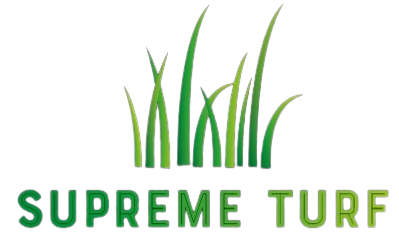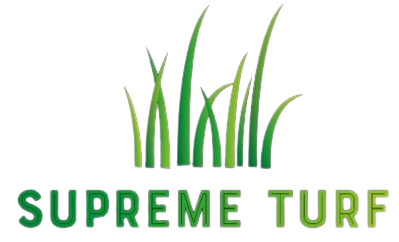Installation Guide
Temporary Artificial Grass Installation
If you have a small area where you wish to use artificial grass just for beautifying purposes or as a temporary installation, here are 3 methods you can use:
- Lay the artificial grass out, cut to correct size and ensure it’s nice and flat. Then place plant pots, garden ornaments or furniture to hold it down. If outdoors ensure it’s held down firmly enough to counteract the wind.
- Lay and cut the artificial grass as above but instead of leaving it loose, use double-sided adhesive tape to hold it down. Again, consider the wind factor if outdoors.
- If double-sided adhesive tape will not work and the surface to be covered will accommodate stapling (such as medium density fibre board or plywood surface) then use a staple gun.
Installing Artificial Grass onto Concrete or Permanent Base
- First of all, assess how much grass you will need. Please note: We supply rolls in 3 widths: 2 meters (6 feet 6 inches), 3.6 meters (11 feet 10 inches) or 4 meters (13 feet 1 inch)
- Make sure that the surface to be covered is clean and smooth, ready to receive the artificial grass. A self-levelling compound available from any DIY store can remove surface imperfections that may show through to the top surface especially on thinner pile height products.
- Lay the artificial grass on to the clean and levelled area to be covered. Allow approximately 50mm of artificial grass to trim off to make that perfect edge, i.e. in doorways or up a wall. Leave for around 2 to 3 hours to settle. This helps stop any wrinkling or creasing.
- Cut and trim your artificial grass, using a sharp Stanley knife making sure there are no gaps between walls and grass.
- Make the joins using the correct type of seaming tape and glue – only quality outdoor tape and glue should be used. We recommend you purchase this from us when placing your order.
- Apply the infill if required. Typically, a sand mix will be used. Spread the infill evenly, taking care not to over fill the surface. Note: Application of sand is best on a dry day. Remember that the infill will eventually compact so you should consider adding a final layer when settled.
Replacing Natural Grass With Artificial Grass Option 1 (using stone and sand)
- First of all, assess how much grass you will need. Please note: We supply grass in 3 widths: 2 meters (6 feet 6 inches), 3.6 meters (11 feet 10 inches) or 4 meters (13 feet 1 inch)
- Remove the grass sod by hand for smaller areas or by using a turf cutter for larger areas.
- You should compact the ground, using a vibrating plate which can be hired at an equipment hire center.
- Apply a geo-textile weed barrier to the base.
- Lay the sub base. This material is designed to level the area. Typically, a 6mm stone aggregate is used. Between 25mm and 75mm thick base should be enough.
- Spread and compact the sub base. Ideally use the vibrating plate mentioned in point 3.
- Lay the base material – a fine layer of sand with less than 6mm depth should suffice. Note: Ideally there should be a very slight slope on the base.
- Lay the artificial grass on top of the sand (as opposed to dragging it onto the base material) and leave for around 2 to 3 hours to settle. This helps stop any wrinkling or creasing.
- Cut and trim your artificial grass, using a sharp knife.
- Make the joins using the correct type of seaming tape and glue – only quality outdoor tape and glue should be used. We recommend you purchase this from us when placing your order.
- Apply the infill as specified. Typically, a sand mix will be used. Spread the infill evenly, taking care not to over fill the surface. Note: Application of sand is best on a dry day. Remember that the infill will eventually compact so you should consider adding a final layer when settled.
- Apply any natural stone, paving or log roll edgings you’ve selected. If you’ve chosen not to use edgings, then apply landscaping nails/U-Pins every 500mm or so.
Replacing Natural Grass With Artificial Grass Option 2 (using sand only)
- First of all, assess how much grass you will need. Please note: We sell in 3 widths: 2 meters (6 feet 6 inches), 3.6 meters (11 feet 10 inches) or 4 meters (13 feet 1 inch).
- Remove the grass sod by hand for smaller areas or by using a turf cutter for larger areas.
- You should compact the ground, using a vibrating plate which can be hired at an equipment hire centre.
- Apply a geo-textile weed barrier to the base.
- Lay a levelling layer of sharp sand to provide a level surface on which to lay the artificial grass. This must be no less than 10mm and no more than 40mm.
- Spread and compact the sub base using the vibrating plate mentioned in point 3
- Lay the artificial grass on top of the sand (as opposed to dragging it onto the base material) and leave for around 2 to 3 hours to settle. This helps stop any wrinkling or creasing.
- Cut and trim your artificial grass, using a sharp Stanley knife
- Make the joins using the correct type of seaming tape and glue – only quality outdoor tape and glue should be used. We recommend you purchase this from us when placing your order.
- Apply the infill as specified. Typically, a sand mix will be used. Spread the infill evenly, taking care not to over fill the surface. Note: Application of sand is best on a dry day. Remember that the infill will eventually compact so you should consider adding a final layer when settled.
- Apply any natural stone, paving or log roll edgings you’ve selected. If you’ve chosen not to use edgings, then apply landscaping nails every 500mm or so.




